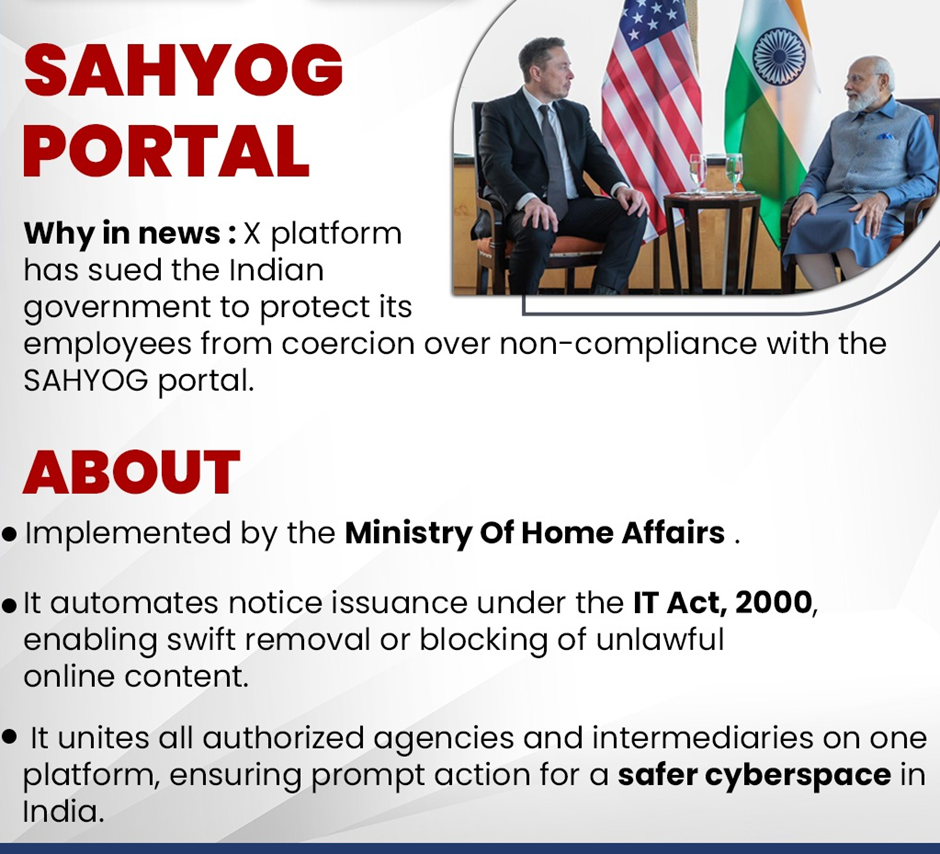Context:
X (formerly Twitter) has raised concerns about the potential misuse of the Indian government's SAHYOG portal, which aims to streamline content takedown processes. While the government claims it will aid law enforcement and social media platforms in addressing unlawful content, critics argue it could lead to unchecked censorship.
About Sahyog Portal:
SAHYOG, created by the Ministry of Home Affairs (MHA), is a platform designed to improve coordination between law enforcement, telecom providers, and social media platforms for quicker takedowns of unlawful content.
· The portal follows a 2023 memorandum from the Ministry of Electronics and Information Technology (MeitY), authorizing agencies to block content under Section 79 of the IT Act.
Key features of the Sahyog Portal:
-
- Integration of Authorized Agencies: The portal connects various agencies, such as the police, with social media platforms to speed up communication and action.
- Swift Action Against Illegal Activities: The portal ensures timely responses to digital offenses, helping law enforcement act quickly.
- Reporting and Removal of Unlawful Content: The portal streamlines the process for reporting illegal or harmful online content, facilitating quick intervention from authorities.
- Integration of Authorized Agencies: The portal connects various agencies, such as the police, with social media platforms to speed up communication and action.

The Role of Section 79 of the IT Act
Section 79 of the IT Act offers "safe harbor" protection to intermediaries like X from liability for third-party content. However, Section 79(3)(b) removes this protection if an intermediary is notified about unlawful content.
· In such cases, the intermediary must promptly remove the content, raising concerns about potential overreach in the absence of clear safeguards.
X’s Concerns:
X argues that SAHYOG misuses Section 79(3)(b) and bypasses the safeguards in Section 69A, which allows content blocking only on specific grounds (e.g., national security) and requires approvals and independent reviews.
With SAHYOG, multiple government agencies, including local police, could issue blocking orders without procedural checks, risking arbitrary censorship and violating the principles upheld in the Shreya Singhal case.
Conclusion
X’s challenge against SAHYOG highlights concerns over the potential misuse of content regulation mechanisms. While the government aims to protect cyberspace, the lack of safeguards and transparency raises significant questions about free speech. The case will likely have major implications for content regulation in India and potentially set a global precedent for online censorship and moderation.







